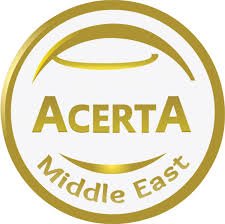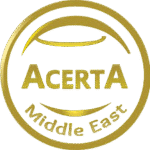In high-hazard industries such as oil and gas, petrochemicals, and chemical manufacturing, understanding and controlling risks is critical to preventing catastrophic incidents like fires, explosions, or toxic releases. The Bow-Tie methodology is a powerful, visual tool that helps teams systematically map out hazards, their causes, consequences, and the controls needed to manage them. By providing a clear, intuitive framework, Bow-Tie diagrams enable stakeholders to grasp complex risks and ensure robust safety measures. This article explores the principles, structure, and practical applications of the Bow-Tie methodology, with insights into how
Cormat Group applies this approach to enhance safety and compliance in challenging environments.
What is the Bow-Tie Methodology?
The Bow-Tie methodology is a risk management tool that visually represents the relationship between a hazard, its potential causes, possible consequences, and the controls in place to prevent or mitigate incidents. Named for its distinctive shape, which resembles a bow tie, the diagram places a central “hazard” or “top event” (the point where control is lost) at the knot. The left side maps out causes (or threats) that could lead to the top event, while the right side outlines potential consequences. Preventive controls are placed on the left to stop the top event, and mitigative controls are placed on the right to reduce the impact of consequences.
The Bow-Tie methodology is widely used in industries governed by regulations like the UK’s Control of Major Accident Hazards (COMAH), OSHA’s Process Safety Management (PSM), or international standards like ISO 31000. For example, in a refinery, a Bow-Tie diagram might depict a hazard like a gas leak, with causes like equipment failure and consequences like a fire, linked to controls like gas detectors and fire suppression systems. The goal is to reduce risks to As Low As Reasonably Practicable (ALARP) by ensuring comprehensive control measures.
Why is the Bow-Tie Methodology Important?
The Bow-Tie methodology is a cornerstone of safety management in high-hazard industries for several reasons:
- Clarity and Visualization: Its simple, visual format makes complex risks easy to understand for diverse stakeholders, from engineers to executives.
- Comprehensive Hazard Management: It connects causes, consequences, and controls, ensuring a holistic approach to safety.
- Regulatory Compliance: Bow-Tie diagrams provide clear documentation for regulators, demonstrating proactive risk management under standards like COMAH or PSM.
- Improved Communication: The visual nature fosters collaboration among teams, aligning them on risk priorities.
- Proactive Risk Reduction: By identifying gaps in controls, it enables early interventions, preventing incidents.
- Stakeholder Confidence: Cormat Group builds trust with employees, regulators, and clients by using Bow-Tie to ensure robust safety measures.
A 2023 report by the Health and Safety Executive (HSE) noted that facilities using visual risk management tools like Bow-Tie reduced safety incidents by 37%, highlighting its effectiveness in high-hazard environments.
Structure of a Bow-Tie Diagram
A Bow-Tie diagram is composed of several key elements that together form a comprehensive risk management framework:
1. Hazard
The central focus of the diagram, representing the activity or condition with the potential to cause harm (e.g., handling flammable liquids).
2. Top Event
The critical point where control over the hazard is lost, leading to a potential incident (e.g., a gas leak or equipment failure).
3. Threats (Causes)
Factors on the left side of the diagram that could trigger the top event, such as equipment malfunction, human error, or external events like power outages.
4. Consequences
Outcomes on the right side of the diagram that could result from the top event, such as fires, injuries, environmental damage, or production losses.
5. Preventive Controls
Measures on the left side that reduce the likelihood of the top event occurring, such as maintenance programs, safety interlocks, or training.
6. Mitigative Controls
Measures on the right side that reduce the severity of consequences, such as fire suppression systems, emergency response plans, or spill containment.
7. Escalation Factors
Conditions that could weaken controls, like inadequate maintenance or lack of training, along with secondary controls to address these factors.
Benefits of the Bow-Tie Methodology
Beyond its core advantages, the Bow-Tie methodology offers additional benefits:
- Flexibility: It can be applied to various hazards, from process risks to health or environmental issues.
- Scalability: Suitable for single systems or entire facilities, adapting to project complexity.
- Training Tool: Its visual format aids in training workers on hazards and controls.
- Audit Support: Provides clear documentation for regulatory audits or safety cases.
- Continuous Improvement: Identifies control gaps, driving ongoing safety enhancements.
Challenges in the Bow-Tie Methodology
The Bow-Tie methodology faces several challenges:
- Data Limitations: Incomplete data on threats or control effectiveness can affect accuracy. Industry databases like OREDA can help.
- Complexity: Large facilities with multiple hazards require detailed diagrams, increasing effort.
- Stakeholder Engagement: Ensuring all teams contribute effectively requires skilled facilitation.
- Dynamic Operations: Changes in processes or conditions demand regular diagram updates.
- Subjectivity: Assessing control effectiveness can be subjective, needing clear criteria.
Conclusion
The Bow-Tie methodology is a vital tool for managing hazards in high-hazard industries, offering a clear, visual framework to connect causes, consequences, and controls. By enabling proactive risk management, it prevents incidents, ensures compliance, and enhances stakeholder understanding.
Cormat Group exemplifies how rigorous Bow-Tie application drives safety excellence, protecting workers, assets, and the environment. Despite challenges like data limitations or complexity, technology, collaboration, and regular updates can overcome them. As industries evolve, the Bow-Tie methodology will remain essential for navigating complex risks and building safer, more resilient operations.


